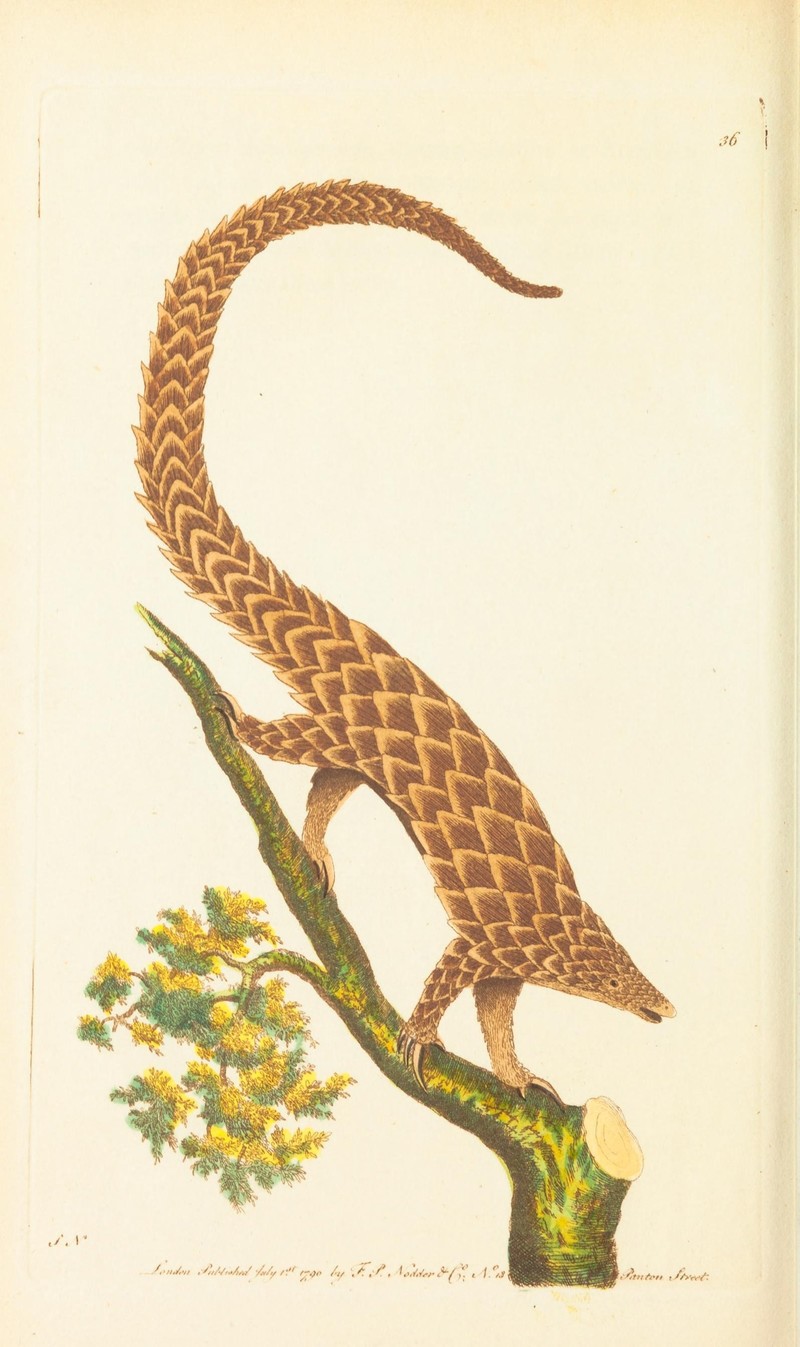Manis tetradactyla = Phataginus tetradactyla (long-tailed pangolin) English: The Four-toed Manis, Manis tetradactyla
Date 1789
Source George Shaw and Frederick P Nodder. The Naturalist's Miscellany: or Coloured Figures of Natural Objects; Drawn and Described Immediately from Nature. Vol. 1 . Scanned and uploaded by the Biodiversity Heritage Library
Author Frederick P. Nodder (Frederick Polydore Nodder (fl. 1770 – 1801))
Source: https://commons.wikimedia.org/wiki/File:The_Naturalist%27s_Miscellany_Vol.1_Four-toed_Manis.jpg
The long-tailed pangolin, African black-bellied pangolin, or ipi (Phataginus tetradactyla) is a diurnal, arboreal pangolin species that belongs to the family Manidae. They are native to parts of western and central Africa, including the Congo Basin and Guinean forests. Long-tailed pangolins feed on ants rather than termites. They have a characteristic very long tail, reaching a length around 60–70 cm. The body can reach a length of 30–40 cm and weigh 2.0–2.5 kg. The long-tailed pangolin is covered with 9 to 13 rows of overlapping, artichoke leaf-shaped keratinous scales. The scales are dark brown color with a brighter rim, which serves as camouflage.
Order: Pholidota
Family: Manidae
Genus: Phataginus
Species: Phataginus tetradactyla Linnaeus, 1766
Synonyms
- Manis tetradactyla Linnaeus, 1766
- Uromanis tetradactyla (Linnaeus, 1766)
- Manis africana Desmarest, 1822
- Manis ceonyx Rafinesque, 1820
- Manis hessi Noack, 1889
